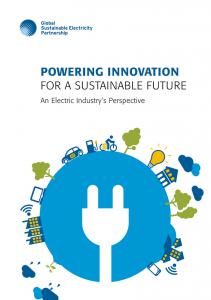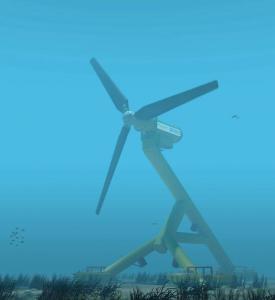To reach CO2, energy goals, combine technologies with stable policies: World electricity report for COP21

The report describes the state of some 50 existing and emerging technologies to generate, distribute, store and reduce the use of electricity
A report from 11 major electricity producers details industry innovations, trends in key regions, 4 principles for policy-making to meet CO2 and energy goals
The report for the upcoming world climate summit (COP21, Paris, Nov. 30 - Dec. 11) by the 11-member Global Sustainable Electricity Partnership (GSEP) describes the outlook for some 50 existing and emerging technologies related to electricity generation (25), systems (11, such as grids, batteries and other means of energy storage, for example), and use (14, eg. more energy efficient lighting).
It outlines electricity-related trends in key regions and countries: Europe, USA, China, Japan, Brazil and India, stressing that an optimal combination of existing and new technologies will vary from country to country, even within geographical regions. Variables include the structure and state of local and regional electricity systems, the availability of energy resources, the development of industry and the speed at which the less mature technologies improve in terms of performance and cost.
And, in an open letter, the group's top executives underline four core policy-making principles to foster the innovation and investment required to meet ambitious climate and energy goals, beginning with secure, stable, clear, consistent and long-term policies, and a system-wide perspective.
The report, Powering Innovation for a Sustainable Future, the outcome of a two year international consultation process, concludes: "Energy efficiency and technological innovation in the electricity sector are essential to both reduce emissions and improve the quality of life of citizens around the world. COP21 policymakers are well positioned to help accelerate the development and deployment worldwide of energy efficiency measures and of innovative technologies with effective policies."
With a combined total of 1.2 billion customers, the 11 GSEP members - American Electric Power (USA), Électricitéde France, Eletrobras (Brazil), ENEL (Italy), EuroSibEnergo (Russia), Hydro-Québec (Canada), Iberdrola (Spain), Kansai Electric Power Company (Japan), RusHydro (Russia), RWE (Germany) and State Grid Corporation of China - delivered about one third of the world's electricity last year, of which approximately 60% was generated with no direct CO2 emissions (hydro, other renewables and nuclear).
The group has 2.4 million employees, 4,000 of them dedicated to research and development, and invests roughly $3 billion in R&D each year.
In their open letter, the top executives urge policy makers to embrace four core principles:
1. Establish secure, stable, clear, consistent and long-term policies that address critically important energy, legal/regulatory economic development, financial and environmental matters with the goal of ensuring an adequate supply of cleaner, secure, reliable, accessible and affordable electricity to tackle climate change.
2. Develop a systemic approach to electricity systems which takes into account the interrelations and synergies between the various elements of the electricity value chain, in order to enable electricity providers to plan, design, construct and operate the most advanced electricity systems with the goal of providing cleaner, reliable, sustainable, secure, flexible, and resilient electricity infrastructures.
3. Promote and engage in public-private partnerships that facilitate decision making among electricity providers, government representatives, and private stakeholders and that foster the development and deployment of new commercially available technologies.
4. Make urgent progress with innovative research, development and demonstrations of advances economically viable technologies that will stabilize and reduce greenhouse gas emissions (GHG) and accelerate the efficient generation, delivery and end-use of electricity.
"Together, we are leading the way in the global effort to avoid, and reduce carbon dioxide emissions by optimising technologies in the right mix, amount, time and place," the executives say. "By systematically optimising and applying the full portfolio of advanced technologies as they become commercially available, we believe that sustainable progress can be made over time to help meet global climate challenges."
* * * * *
The full 68-page report, "Powering Innovation for a Sustainable Future," is available at http://bit.ly/1WAoR9W (photos: http://bit.ly/1KTYVRo)
Terry Collins
1-416-878-8712
email us here
TCA
Legal Disclaimer:
EIN Presswire provides this news content "as is" without warranty of any kind. We do not accept any responsibility or liability for the accuracy, content, images, videos, licenses, completeness, legality, or reliability of the information contained in this article. If you have any complaints or copyright issues related to this article, kindly contact the author above.


